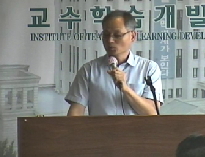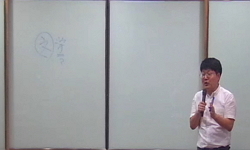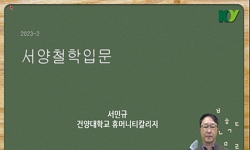不然 李箕永 연구의 철학적, 문헌학적 경향은 교리 분류와 개념의 연구가 강조되어 있으므로 유럽 선생님들인 Étienne Lamotte와 Paul Demiéville의 상당한 영향을 보인다. 현대 종교학...
http://chineseinput.net/에서 pinyin(병음)방식으로 중국어를 변환할 수 있습니다.
변환된 중국어를 복사하여 사용하시면 됩니다.
- 中文 을 입력하시려면 zhongwen을 입력하시고 space를누르시면됩니다.
- 北京 을 입력하시려면 beijing을 입력하시고 space를 누르시면 됩니다.
https://www.riss.kr/link?id=A99621286
-
저자
Jö ; rg Plassen
- 발행기관
- 학술지명
- 권호사항
-
발행연도
2012
-
작성언어
-
-
주제어
은유 ; 스키마타 ; 칸트 ; 개념적 혼성 ; Wŏ ; nhyo ; Myŏ ; nghyo ; Fa-tsang ; Ch’eng-kuan ; golden lion ; Indra’s net ; Ch’i-hsin lun ; ocean seal samā ; dhi ; metaphors ; image schemas ; schemata ; Kant ; conceptual blending ; Gilles Fauconnier ; Mark Turner ; 華嚴 ; 元曉 ; 明曉 ; 法藏 ; 澄觀 ; 金獅子 ; 因陀羅網 ; 起信論 ; 海印三昧
-
KDC
220
-
등재정보
KCI등재
-
자료형태
학술저널
-
수록면
109-134(26쪽)
-
KCI 피인용횟수
0
- 제공처
- 소장기관
-
0
상세조회 -
0
다운로드
부가정보
국문 초록 (Abstract)
현대 종교학에서 이기영 교수의 불교에 대한 이성적인 접근은 20세기 서양 종교의 영향으로 다소 구식이라고 여겨진다. 다만 지금의 문화적인 전환이 얼마나 오래 지속될지 모르므로 한국불교학은 여러 다른 시도를 하며 철학적, 문헌학적 유산의 장점을 잘 지키고 보전하는 것이 바람직하다.
이에 대한 하나의 접근 방법은 불교 사상역사에서 텍스트 이미지의 역할에 대한 의식을 깨우는 것이다. 본고는 Kant가 처음 도입하고 후에는 철학, 심리학, 인지과학에서 발달된 스키마의 개념이 어떻게 적용될 수 있는지 힌트를 주는 것이 목적이다. 이 시도에서 두 가지 경우가 간단히 논의되겠다.
하나는 Michael Kimmel의 전 작품을 통하여 ‘이미지 스키마타를 이용함으로써 화엄 수행과 철학에서의 이미지 사용을 좀 더 정확히 이해하는 것이다.
더 중요하는 것은 Gilles Fauconnier과 Mark Turner의‘개념의 결합’을 사용하여 은유 스키마타가 Peter N. Gregory에 의해 제기된 질문을 (왜 기신론이 동아시아 화염에서 중요하게 되었는가?) 해결할 열쇠를 제공할 수 있다고 주장 한다. 두 텍스트는 개념 병렬이 아니라 오히려 (원효의 논소 안에서) 두 은유 스키마타의 병렬로 연관된다.
不然 李箕永 연구의 철학적, 문헌학적 경향은 교리 분류와 개념의 연구가 강조되어 있으므로 유럽 선생님들인 Étienne Lamotte와 Paul Demiéville의 상당한 영향을 보인다.
현대 종교학에서 이기영 교수의 불교에 대한 이성적인 접근은 20세기 서양 종교의 영향으로 다소 구식이라고 여겨진다. 다만 지금의 문화적인 전환이 얼마나 오래 지속될지 모르므로 한국불교학은 여러 다른 시도를 하며 철학적, 문헌학적 유산의 장점을 잘 지키고 보전하는 것이 바람직하다.
이에 대한 하나의 접근 방법은 불교 사상역사에서 텍스트 이미지의 역할에 대한 의식을 깨우는 것이다. 본고는 Kant가 처음 도입하고 후에는 철학, 심리학, 인지과학에서 발달된 스키마의 개념이 어떻게 적용될 수 있는지 힌트를 주는 것이 목적이다. 이 시도에서 두 가지 경우가 간단히 논의되겠다.
하나는 Michael Kimmel의 전 작품을 통하여 ‘이미지 스키마타를 이용함으로써 화엄 수행과 철학에서의 이미지 사용을 좀 더 정확히 이해하는 것이다.
더 중요하는 것은 Gilles Fauconnier과 Mark Turner의‘개념의 결합’을 사용하여 은유 스키마타가 Peter N. Gregory에 의해 제기된 질문을 (왜 기신론이 동아시아 화염에서 중요하게 되었는가?) 해결할 열쇠를 제공할 수 있다고 주장 한다. 두 텍스트는 개념 병렬이 아니라 오히려 (원효의 논소 안에서) 두 은유 스키마타의 병렬로 연관된다.
다국어 초록 (Multilingual Abstract)
As this essay argues, to this avail one might draw upon a in the given context hitherto somewhat neglected method complementary to the study of philosophic terms and concepts, the analysis of the impact of textual images on the history of religious thought. In particular, this essay is intended to give a perspective on how the concept of schemata, first invented by Kant and then taken up in Philosophy, Psychology and Cognitive Sciences, might be employed to this avail.
After a short introduction to the use of imagery in Hwaŏm Buddhism, we draw upon Michael Kimmel’s application of the notion of “image schemas” to the “golden lion”. Kimmels’s analysis does not only give an accurate model of how this dynamic textual image actually functions, but also provides a methodological yardstick enabling us to distinguish between more “soteriologically” and rather “philosophically” oriented usages of imagery, and thus as some potential also for the philological task of (re)grouping East Asian Hwaŏm texts by authors, resp. workshops.
Subsequently, it is demonstrated how an analysis of the interaction of metaphor schemata may help to provide an answer to a long standing question initially raised by Peter N. Gregory, i.e. how it came about that the Ch’i-hsin fun was linked to the Hua-yen-ching and achieved its prominent position in the doctrinal classification scheme of later Hua-yen. Applying Gilles Fauconnier’s and Mark Turner’s notions of “Conceptual blending”, it is argued that rather than philosophical concepts, it were two metaphors employed to circumscribe the Buddha’s mind which, due to unification in a conceptual (or, perhaps better, schematic) blend, lead to the association of the texts.
The philosophical and philological bent of Puryŏn Rhi Ki-young’s 不然 李箕永 research, emphasizing very much on the study of doctrinal differentiations and philosophic terms, clearly shows the influence of his European teachers Étie...
The philosophical and philological bent of Puryŏn Rhi Ki-young’s 不然 李箕永 research, emphasizing very much on the study of doctrinal differentiations and philosophic terms, clearly shows the influence of his European teachers Étienne Lamotte and Paul Demiéville. Within contemporary Religious Studies, Prof. Rhi’s to some extent also theologically informed approach usually is considered somewhat outdated. And yet, we do not know how long the current wave of cultural studies will last, and Korean Buddhology might be well advised to continue to preserve and build upon its precious philosophical and philological heritage.
As this essay argues, to this avail one might draw upon a in the given context hitherto somewhat neglected method complementary to the study of philosophic terms and concepts, the analysis of the impact of textual images on the history of religious thought. In particular, this essay is intended to give a perspective on how the concept of schemata, first invented by Kant and then taken up in Philosophy, Psychology and Cognitive Sciences, might be employed to this avail.
After a short introduction to the use of imagery in Hwaŏm Buddhism, we draw upon Michael Kimmel’s application of the notion of “image schemas” to the “golden lion”. Kimmels’s analysis does not only give an accurate model of how this dynamic textual image actually functions, but also provides a methodological yardstick enabling us to distinguish between more “soteriologically” and rather “philosophically” oriented usages of imagery, and thus as some potential also for the philological task of (re)grouping East Asian Hwaŏm texts by authors, resp. workshops.
Subsequently, it is demonstrated how an analysis of the interaction of metaphor schemata may help to provide an answer to a long standing question initially raised by Peter N. Gregory, i.e. how it came about that the Ch’i-hsin fun was linked to the Hua-yen-ching and achieved its prominent position in the doctrinal classification scheme of later Hua-yen. Applying Gilles Fauconnier’s and Mark Turner’s notions of “Conceptual blending”, it is argued that rather than philosophical concepts, it were two metaphors employed to circumscribe the Buddha’s mind which, due to unification in a conceptual (or, perhaps better, schematic) blend, lead to the association of the texts.
목차 (Table of Contents)
- Abstract
- Ⅰ. Introduction
- Ⅱ. Imagery in religion and philosophy : Root metaphors, absolute metaphors, and schemata
- Ⅲ. Imagery In Hua-yen : image schemata
- Ⅳ. The ocean metaphors : A blend of two schemata
- Abstract
- Ⅰ. Introduction
- Ⅱ. Imagery in religion and philosophy : Root metaphors, absolute metaphors, and schemata
- Ⅲ. Imagery In Hua-yen : image schemata
- Ⅳ. The ocean metaphors : A blend of two schemata
- 참고문헌
- 국문초록
참고문헌 (Reference)
1 Pepper, Stephen C., "World Hypotheses" Univ. of California Press 1970
2 Thurman, Robert A.F., "Voidnesses and totalities: Madhyamika and Hua-yen" B. R. Publ. Corp. 343-348, 1980
3 Gregory, Peter, "Tsung-mi and the Sinification of Buddhism. (Kuroda Institute Studies in East Asian Buddhism 16)" Univ. of Hawai’i Press 2002
4 Johnson, Mark, "The philosophical significance of image schemas, In From Perception to Meaning: Image Schemas in Cognitive Linguistics" Mouton De Gruyter 15-33, 2005
5 Fauconnier, Gilles, "The Way We Think: Conceptual Blending And The Mind's Hidden Complexities" Basic Books 2003
6 Obert, Mathias, "Sinndeutung und Zeitlichkeit. Zur Hermeneutik des Huayan-Buddhismus" Meiner 2000
7 Blumenberg, "Paradigmen zu einer Metaphorologie (stw 1302)" Suhrkamp 1999
8 Ortner, Sherry, "On Key Symbols, In A reader in the Anthropology of Religion. Second Edition" Oxford, U.K. 2008
9 Demiéville, Paul, "Le Miroir spirituel, In Choix d'etudes bouddhiques (1929-1970)" EJ Brill 135-156, 1973
10 Kant, Immanuel, "Kritik der Urteilskraft. (Philosophische Bibliothek)" Meiner 2009
1 Pepper, Stephen C., "World Hypotheses" Univ. of California Press 1970
2 Thurman, Robert A.F., "Voidnesses and totalities: Madhyamika and Hua-yen" B. R. Publ. Corp. 343-348, 1980
3 Gregory, Peter, "Tsung-mi and the Sinification of Buddhism. (Kuroda Institute Studies in East Asian Buddhism 16)" Univ. of Hawai’i Press 2002
4 Johnson, Mark, "The philosophical significance of image schemas, In From Perception to Meaning: Image Schemas in Cognitive Linguistics" Mouton De Gruyter 15-33, 2005
5 Fauconnier, Gilles, "The Way We Think: Conceptual Blending And The Mind's Hidden Complexities" Basic Books 2003
6 Obert, Mathias, "Sinndeutung und Zeitlichkeit. Zur Hermeneutik des Huayan-Buddhismus" Meiner 2000
7 Blumenberg, "Paradigmen zu einer Metaphorologie (stw 1302)" Suhrkamp 1999
8 Ortner, Sherry, "On Key Symbols, In A reader in the Anthropology of Religion. Second Edition" Oxford, U.K. 2008
9 Demiéville, Paul, "Le Miroir spirituel, In Choix d'etudes bouddhiques (1929-1970)" EJ Brill 135-156, 1973
10 Kant, Immanuel, "Kritik der Urteilskraft. (Philosophische Bibliothek)" Meiner 2009
11 McMahan, David L., "Empty Vision. Metaphor and Visionary Imagery in Mahāyāna Buddhism" Routledge Curzon 2002
12 Kimmel, Michael, "Culture regained: Situated and compound image schemas, In From Perception to Meaning: Image Schemas in Cognitive Linguistics" Mouton De Gruyter 285-311, 2005
13 이기영, "Answer: What do we believe in? How should we lead our lives?, in 원효사상연구1" 한국불교연구원 737-752, 1994
동일학술지(권/호) 다른 논문
-
The Roots of Buddhist Imperialism in Modern Japan, 1868-1945
- 한국불교연구원
- 허남린(Hur, Nam Lin)
- 2012
- KCI등재
-
- 한국불교연구원
- 정영근(Jung, Yeong Keun)
- 2012
- KCI등재
-
- 韓國佛敎硏究院
- 한자경
- 2012
- KCI등재
-
- 한국불교연구원
- 장석만(Jang, Suk Man)
- 2012
- KCI등재
분석정보
인용정보 인용지수 설명보기
학술지 이력
| 연월일 | 이력구분 | 이력상세 | 등재구분 |
|---|---|---|---|
| 2028 | 평가예정 | 재인증평가 신청대상 (재인증) | |
| 2022-01-01 | 평가 | 등재학술지 유지 (재인증) |  |
| 2019-01-01 | 평가 | 등재학술지 유지 (계속평가) |  |
| 2016-01-01 | 평가 | 등재학술지 선정 (계속평가) |  |
| 2015-12-01 | 평가 | 등재후보로 하락 (기타) |  |
| 2015-03-19 | 학회명변경 | 영문명 : Korean Institute for uddhist Studies -> Korean Institute for Buddhist Studies |  |
| 2011-01-01 | 평가 | 등재학술지 선정 (등재후보2차) |  |
| 2010-01-01 | 평가 | 등재후보 1차 PASS (등재후보1차) |  |
| 2009-01-01 | 평가 | 등재후보학술지 유지 (등재후보1차) |  |
| 2008-01-01 | 평가 | 등재후보 1차 FAIL (등재후보1차) |  |
| 2006-01-01 | 평가 | 등재후보학술지 선정 (신규평가) |  |
학술지 인용정보
| 기준연도 | WOS-KCI 통합IF(2년) | KCIF(2년) | KCIF(3년) |
|---|---|---|---|
| 2016 | 0.77 | 0.77 | 0.61 |
| KCIF(4년) | KCIF(5년) | 중심성지수(3년) | 즉시성지수 |
| 0.59 | 0.55 | 1.569 | 0.17 |




 KCI
KCI 스콜라
스콜라







